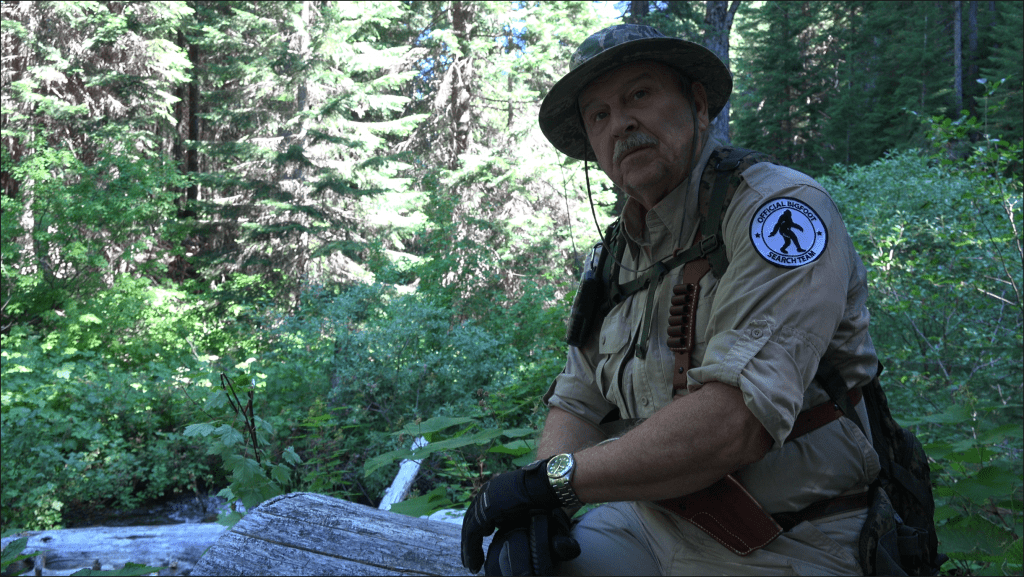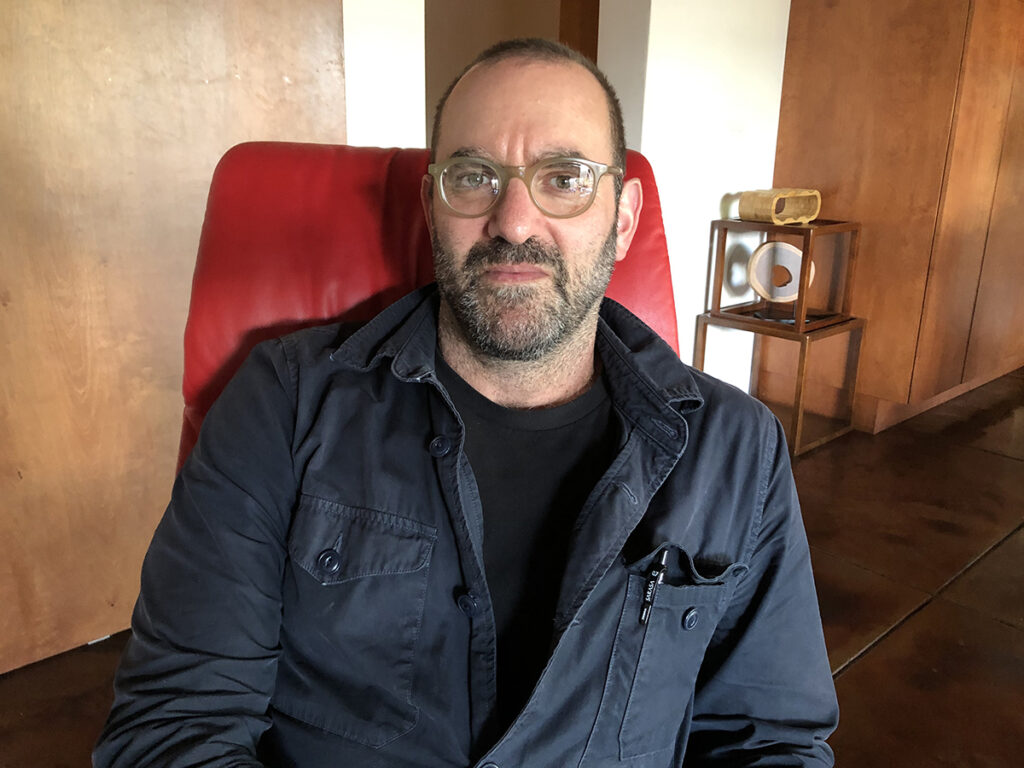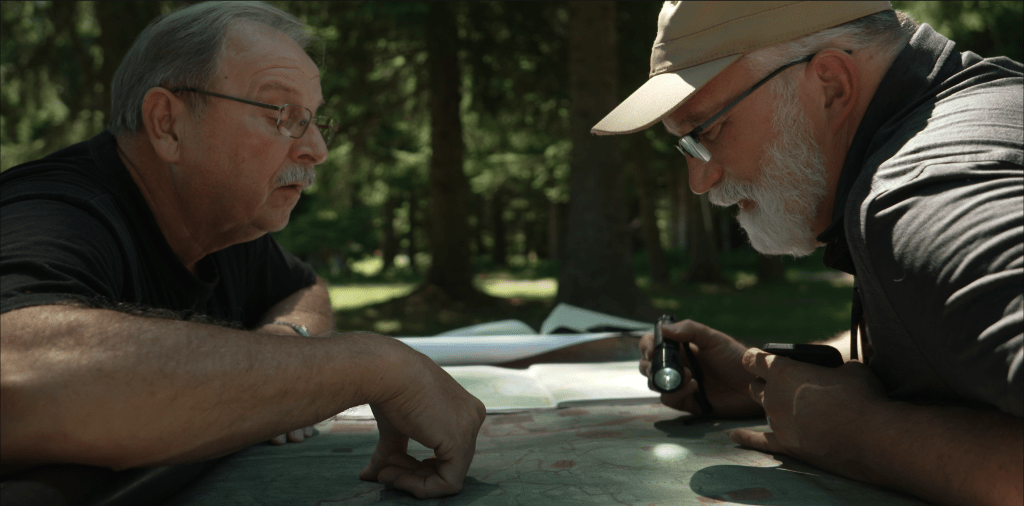Emerson Film Professor Went Searching for Bigfoot

By David Ertischek ’01
For five weeks last summer, Assistant Professor Joe Maggio trekked through the Blue Mountains of Oregon in search of one of America’s longest-running myths: Bigfoot.
For Maggio, who’s in his second semester teaching directing in the Visual and Media Arts department, finding Bigfoot wasn’t his mission. His mission was to create a documentary about Gary Volkmer, a man who has spent much of his life — and a lot of money — trying to find the mythical creature.
This wasn’t just a foot-by-foot, follow-the-Bigfoot-tracks expedition. They employed advanced technology, including thermal drones, military-grade night vision goggles, Flir cameras, Eye Trax cameras, Cuddelink trail cameras that use satellites to pass along images from the middle of nowhere back to base camp, and finally, 3D imaging in the event a footprint was found.
“We went in an enormous RV outfitted with all of this technology and the idea was to find, and possibly kill, Bigfoot,” said Maggio, assistant professor of Visual & Media Arts. “I don’t need to tell you – we did not find Bigfoot. It’s a documentary, not so much about finding Bigfoot, as it is about believing in Bigfoot.”

Coming from a narrative storytelling background, this is Maggio’s first foray into the documentary. He was brought into the fold by director of photography Sam Shinn, who worked with Maggio on one of the professor’s prior movies, Paper Covers Rock. Shinn first started working with Volkmer years ago in Colorado, when the latter realized he needed a cinematographer to document a potential Bigfoot discovery. Shinn told Maggio about Volkmer through the years while he continued to document Volkmer’s many excursions. Last summer, when Volkmer announced he would be making one last big trip, Maggio decided it was time to make a documentary.
Maggio found inspiration in a quote attributed to Franz Kafka: “A legend is our attempt to explain the inexplicable.”
“What I was concerned with was finding out what it is in this man’s life that led him to need to believe in Bigfoot. Why Bigfoot?” said Maggio. “It’s about the nature of belief and why we doggedly believe in something when every bit of evidence points to the contrary. All rational analysis should lead us to one conclusion – and yet we somehow get to this other conclusion.”
Chasing down a mythical creature in a time when our nation is awash in conspiracy theories seemed timely. Maggio said it was a good way to look at the idea of conspiracy theories without making a documentary about conspiracy theories.

On their trek from Nebraska to Oregon, they met and spoke with several people who mostly didn’t bat an eye when they learned Volkmer, Maggio, and Shinn were looking for Bigfoot.
“There are a lot of people who think that Bigfoot is walking among us,” said Maggio. “That was one surprising twist for me. For so many people it’s not considered a wacky idea. In fact, many had their own stories of encounters with Bigfoot.”
One man told Maggio that he had seen a tree whose upper branches had been stripped as if someone had run a giant hand down them, and the leaves scattered about the base of the tree were covered in scat. The man retrieved the scat, which now resides in Tupperware in his freezer.
The legend of Bigfoot persists throughout America, with consistent Bigfoot sightings from the Florida Panhandle to the Blue Mountains of Oregon. So why is it that nobody has successfully produced solid photographic evidence of its existence?
“There’s an idea that Bigfoot might be linked to portals, and the reason they’re so elusive is that they move between different dimensions, coming and going through these portals,” said Maggio. “Another notion commonly held among believers is that Bigfoot has the supernatural ability to sense and even shut down electronics, and that’s why no one has ever gotten a good video or even a photograph of Bigfoot.”
Volkmer has a partner, said Maggio, in Dr. Jeff Meldrum, a professor of anatomy and anthropology at Idaho State University, and also an expert on food morphology and locomotion in primates. Meldrum is regarded as the foremost Bigfoot scholar in the world, and was highlighted in a Scientific American article about the existence of Bigfoot.
“Jeff retains a skeptical, scientific perspective, but he also firmly believes in Bigfoot, and that the evidence already exists in the form of casts taken from footprints,” said Maggio.
Maggio and his longtime editor, Seth Anderson, are currently finishing a first cut of the documentary, but Maggio is already imagining the tagline for the movie poster.
“It’s not true crime. It’s not the latest celebrity takedown. It’s not an urgent social commentary. It’s just Gary from Omaha,” said Maggio, citing the film’s title. “It’s a portrait of a pretty fascinating guy who’s nearing the end of his life and has a singular focus, almost obsession, of finding this mythical creature. I’m glad there are still people like him walking around out there. It’s like believing in magic. He really believes Bigfoot is out there and he’s going to find him.”
Maggio said making the documentary posed an interesting challenge, given that most viewers know from the beginning how it’s going to end. You know Volkmer isn’t going to emerge victorious.
In lieu of this, Maggio focused on the appeal of Volkmer’s character, his backstory, growing up relatively poor on a farm in Nebraska, to success as a businessman, but always bringing that hard-working farm boy mentality to every endeavor.
“He’s always in a good mood. He loves to laugh, and we laughed a lot on the trip. He’s like an ever-chipper Eagle Scout who believes that if you do the hard work you’ll get the results. He never loses his optimism,” said Maggio.
The experience of documenting Volkmer and creating his first documentary is helping Maggio be a better educator.
“What I’ve learned from this experience is that sometimes you’ve got to throw away the script and the preconceived road map and go where the story wants to go. That’s a great lesson,” said Maggio. “Sometimes you think you know the story of the film, and then it’s not what you thought it was, and you can’t fight that. Traveling with Gary has driven it home to me. You need to do a lot of pre-production and always go into these situations with a plan, but once you get on location with all these moving pieces, suddenly the story just reveals itself, and that’s where you have to go.”
Maggio said it’s been a great experience for him, as the process required him to use all his filmmaking skills. He was doing sound, manning one of the cameras, directing, cooking food, imagining the edit in his head as they wandered through the mountains.
“That’s something I’m constantly drilling into students’ heads. Don’t go thinking you’ll just be a director, or an editor, or a director of photography, or a writer,” said Maggio. “Once you get out in the world you’ll discover that making a film often requires knowledge of all of these disciplines, and the more familiar you are with the craft, the better off you’ll be.”
Categories